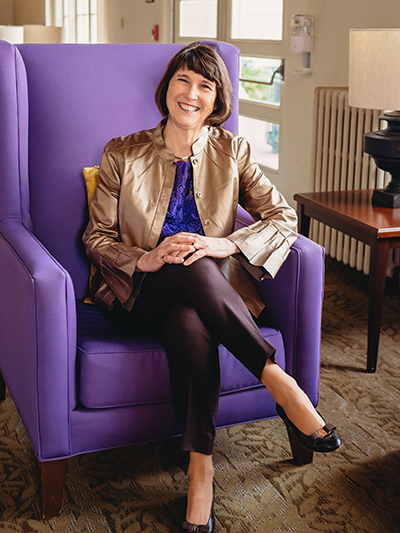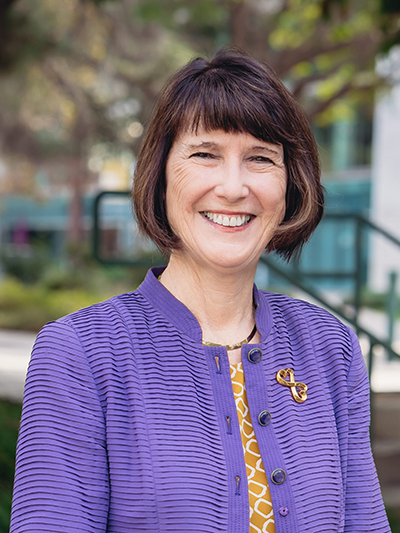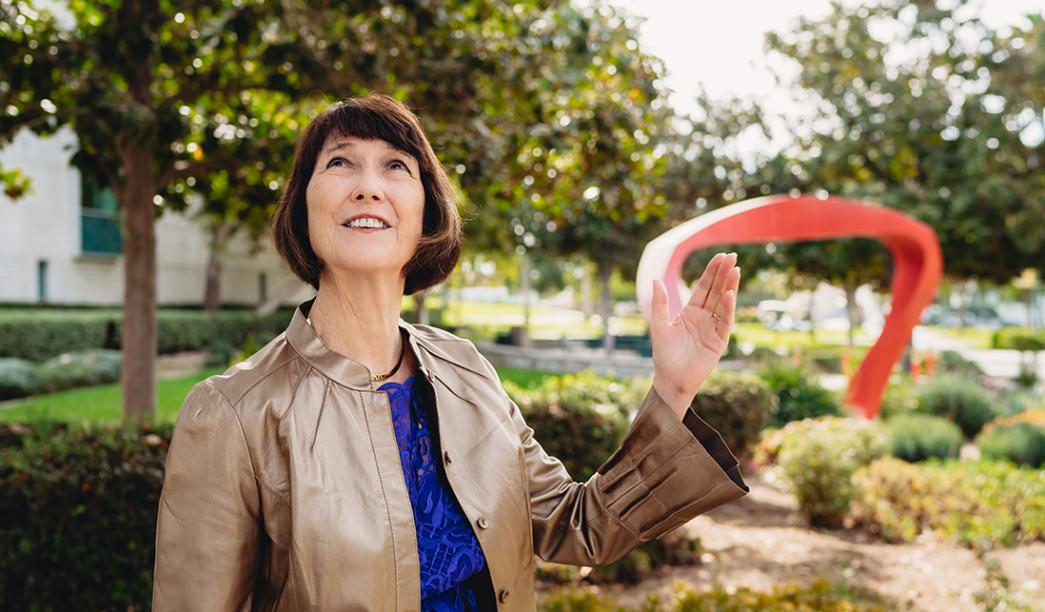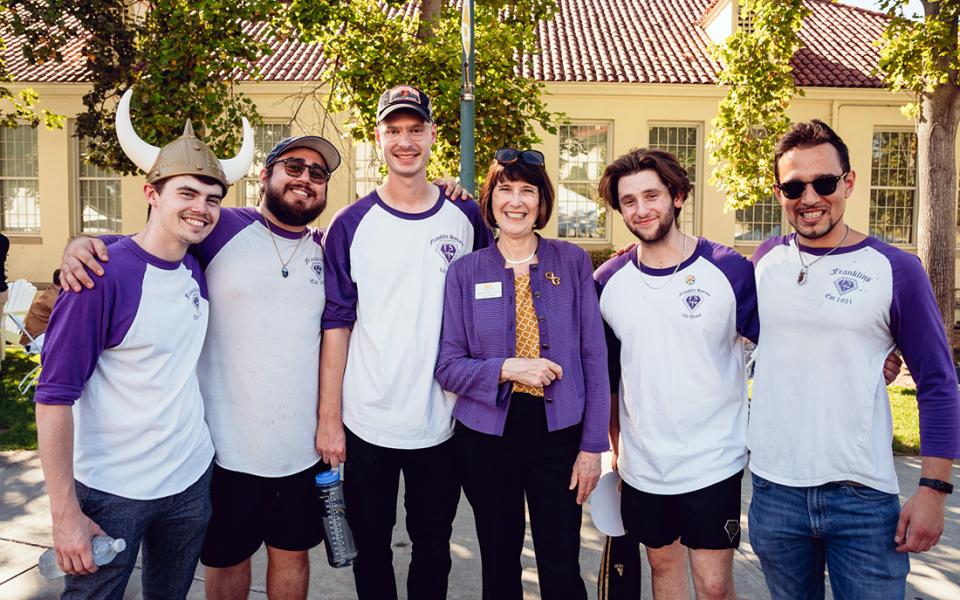What can you share about fundraising and development efforts?
Within the first four weeks of taking office in July, I developed a Short-Range Strategic Plan. In August, I got the Board of Trustees to endorse it and then made it public. It’s a pretty simple plan. A three-to-four-year time frame to get Whittier back in a viable enrollment state. And for fundraising, we are focusing on donations to the Whittier Fund in support of student scholarships, faculty salaries, and current operations. Our trustees will be the leaders in this donor group, giving at a higher level than previously.
The good news: When we asked the trustees to commit to a million dollars in this first fiscal year and gave them until December to make their pledges, they actually did so by mid-October. We’ve also seen a big uptick in alumni giving. With almost 25% more donors to the Whittier Fund than at this time last year, we’ve more than tripled the dollars raised. People wanted to support Whittier, but they weren’t sure what the Whittier College was that they were supporting. Now they have a lot more confidence. We’re recommitted to the personalized undergraduate experience and the social mobility we’re accomplishing with our graduates.
There is both an art and science to a college’s enrollment efforts. Can you summarize Whittier’s strategies in this area?
I first needed to recruit some additional talent in that area to help our team. Ken Woods ’84 agreed to return. You do need the science, the knowledge of effective methodologies. You also have to explain the institution through people who are known to those students. Whittier is known for a very strong teacher-education program. There are lots of Whittier graduates among the teachers in our local schools and leaders of school systems. Telling those people what Whittier is — the Whittier they appreciated — really helps us magnify our message to the students in local schools. We’re hosting those teachers and administrators on our campus. If we get their students on campus, they’re going to say, “Wow, I didn’t have a clue how beautiful Whittier College is.”
The enrollment mechanism is working again. Get outreach information, tap into our alumni in schools, tap into our alumni who have neighbors and friends. You can brag about Whittier College again; it’s the school today you were excited about when you attended. College-bound students think about their destination for a while, as they should for such a major financial decision.
Our recruitment efforts have to start with younger high school students and then build on that. In the meantime, we have some very strong community colleges around us, and we can handle taking in transfer students to fill in those spots. We’ve invited 15 community college presidents and their transfer administrative staff to our campus. And we can offer their students housing, a big draw for students who would like to have a residential experience.
As a student, you actually transferred to Whittier after a year at Cal State Fullerton.
I had been planning to spend the early part of my undergraduate years as a commuter student at a public college, saving money to live on campus at Whittier when I transferred. I thought I would have to do it for two years. But I had scholarship money and realized I could transfer sooner. I decided after one year at Cal State Fullerton that I was transferring. The wait to transfer was taking up too much of my college experience. Being slightly more risk-taking today, I probably would have gone to Whittier all four years.
 This past summer, you convinced a number of alumni to help paint buildings on campus. That’s a form of engagement beyond the norm. How did that project unfold?
This past summer, you convinced a number of alumni to help paint buildings on campus. That’s a form of engagement beyond the norm. How did that project unfold?
It was a casual comment among folks who had shared some concerns on social media. They were pleased that things were turning around. And if volunteering on campus would be useful, they were available. I decided to test that. They showed up. We had two different painting days. I think we had 25 volunteers across the two days. We also had some students and staff volunteer. The buildings didn’t look terrible. They just looked tired. We focused on all of the floors in Hoover Hall, which is right next to where my office is, and it just came out looking sparkling. Who knows, maybe next summer we’ll have this event again. We do have air conditioning, so we weren’t harming these people to test their loyalty!
Whittier has students who are underrepresented in higher education top of mind. What can you share about programs to attract young people who might not otherwise feel college-bound — and how does the school’s personalized approach to education help them finish their degree?
Many students may have college on their radar, but they don’t foresee the wide range of career opportunities that college-educated people have. So, parents in service jobs may want their kids to go to college, but they may not be able to offer much more guidance than what my parents told me: “Go to college. It will be a better life.”
We take that belief structure and give them more opportunities to understand what the choices are. That requires a level of trust. Families have to trust us with their students. A student may go home at age 19 and say, “I want to be a neurosurgeon.” The parents may need help to understand how their child will get there. A faculty member encouraging that student — you have the talent and the dedication required — becomes a bridge from the family’s belief in that student to the faculty’s belief in that student.
How does Whittier establish that baseline of trust with a new student?
Speaking from my own experience as a student, I trusted the outcomes of people who went to Whittier ahead of me. You see a multigenerational trust; you discover that the faculty and staff really want to get to know you. If you need to talk to a faculty member about a problem, you will get a response. Someone is listening to you. That’s our expectation of this faculty,
and that is what they deliver.
We are living in a post-pandemic world where anxiety and mental health — particularly among college students — are topical. How does Whittier address and manage this area of student life?
I was concerned about that when I arrived. Do we have the kind of mental health commitments that will be necessary? I’ve been really impressed with both our health services and our counseling services. We have truly caring and talented people. Our director of counseling, Dr. Rebecca Eberle-Romberger, has been here 35 years. She sets the tone.
We also have 24-hour apps that allow a student to talk to a mental health professional if they’re awake in the middle of the night and anxious. We’re offering a robust system of student support, especially in mental health.
You mentioned some initial reluctance upon arriving last summer. Was that countered at all by the reception and encouragement from faculty and staff , students, trustees, and alumni?
It matters that I’ve had such a warm reception. I agreed to stay an extra year [until June 2025]. The last thing I want to do is destabilize that sense of, “We’re all in this together. We’re working toward a purpose that we really value." You don’t want to leave in the middle of something going in the right direction. I will not be looking over the shoulder of the next president. I’m going to be a cheerleader, in the background. But I think I can do a smoother handoff in 2025, rather than 2024.
What keeps you pushing forward?
We want to make sure this exists for future generations. We are offering a rarefied opportunity at Whittier. [Many of] these students bring challenging life experiences to college. Think about what that means as they go into leadership positions in our world. They have so much more understanding about what the full range of challenges is. It’s easy to talk about what
matters, but if you’ve lived it, you have more ideas about what it takes to fix it.
 What were your initial impressions upon taking office this summer?
What were your initial impressions upon taking office this summer?


 This past summer, you convinced a number of alumni to help paint buildings on campus. That’s a form of engagement beyond the norm. How did that project unfold?
This past summer, you convinced a number of alumni to help paint buildings on campus. That’s a form of engagement beyond the norm. How did that project unfold?